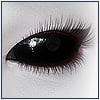UV mapping Question - please help
 ForbiddenWhispers
Posts: 1,427
ForbiddenWhispers
Posts: 1,427
Hey there,
I've just started to recently learn how to model. Most of you guys will know me for my models with FWDesign and my characters. But I thought it was about time to start learning to model all on my own.
I do have cinema4D, but I find the interface somewhat overwhelming when I'm only just starting out. In that program I haven't gotten very far apart from UV mapping some simple shapes and modelling a few simple things. So, I decided to try Hexagon & see whether its simpler UI was better for my virgin modeller brain. Turns out the modelling tools in Hex are easier for me to understand. So I've been trying to persevere with this software to learn in.
So far, I've successfully modelled a crate in hex, UV mapped it and textured it. (See links). *Woohooo go meeee*
http://sphotos-f.ak.fbcdn.net/hphotos-ak-ash4/487528_309026869204544_313928203_n.jpg
http://sphotos-d.ak.fbcdn.net/hphotos-ak-ash4/307964_309026882537876_130208927_n.jpg
http://sphotos-g.ak.fbcdn.net/hphotos-ak-ash3/538885_309026895871208_1509615191_n.jpg
What I want to know is. Is it possible in Hex to add several mesh elements onto one UV map. For example, this cube has one UV b'coz its one solid object. But what if, I was to make a wall of crates & make it into one object, but I didn't want them to share the same UV as I wanted to texture each crate independantly. How would I go about doing that?
Is it even possible in Hex or would I have to use an external UV mapper program?
I know it's possible in cinema, but I don't feel confident enough to tackle it in that program just yet. I was very much hoping that I could stick to Hexs' simple UI while I'm in the early learning stages.
I've been searching for tutorials on UV mapping, but with no such luck.
Any advice, and help would be greatly appreciated.
Thanking you in advance,
Anna
xxx


Comments
For the wall of crates example, I would just make 1 crate with a single UV map...then when building the 'wall' assign several different materials.
Something like CrateA, CrateB and CrateC. They will all use the same UV mapping but since the are different materials, they'll be able to be textured individually.
Then when you stack them and merge them into one object, the should retain the material names for each 'section'.
It will be easier to map/texture a simple item than it is a 'stack' of them.
I've done that regularly in Blender, so it should be doable in Hex, too. Just remember to give them each a unique material name before stacking. This will also work if you want to scale/resize them...but depending on how extreme the resizing, you could end up stretching the texture map. A simple up/down scale sizing shouldn't stretch it, but scaling along a single axis probably will.
Hey there,
Thank you so much for your indepth reply. I really appreciate it.
Another Q, I had was for example. If i was modelling a horse jump and I made each element separately. Such as the poles, legs and fixtures & gave them all their own material zone. How would I go about adding all those separately UVed elements into the same UV map space? This way, cutting down my UV Map numbers.
Another example would be, when you make a figure and you separately UV the legs and arms, but they end up sharing a map.
Is it possible to do that in Hex?
I hope I'm explaining myself properly, I have a tendancy to ramble. If I am I do apologise,
Thank you again,
Anna
xxxx
I don't know how capable the built in UV editing is in Hex, but in Blender, I can take parts of a couple of maps, rearrange them, move them to one, etc and then save that out to a single file.
UVMapper can do that, too (but it's a real pain to do in the free version).
That's something that any decent, modern app should be able to do...I just haven't done enough in Hex to know for sure (I really do prefer Blender...I have many of the same 'arguements'/reservations about Hex that people say the have against Blender...)
In Hex, each shape must be UV mapped separately - you can't normally put two objects onto one UV space. This can be done by selecting more than one object and laying out the UV maps onto one template, but it is a real pain to try to get the materials to fit correctly onto the objects - wouldn't recommend this for anything complex.
Fully agree that if you are making a bunch of identical shapes, such as the wall of crates you mentioned, that you make one, UV map it, then copy/paste. That way you can use the same template to make as many different materials as you need. Just don't weld them all together afterwards - that will destroy the UV mapping.
I, for instance use UU3D, for a number of reasons - mainly because Hex chokes up on complex UV mapping. I often make projects which consist of several hundred individual shapes. Hex handles UV mapping reasonably well - not great. The two biggest failings for me is that it doesn't retain seams and pins after saving and closing, so the job has to be done in one sitting. The other is that it fits everything onto the grid, so has no idea of proportions, often giving an insignificant part of the shape a lot of space and the main part the least space. UU3D has a command to lay out the islands proportionate to the model.
When I export the .obj to UU3D, it reads the parts as groups, which can be individually mapped, or combined maps made. The maps can all be laid out on one template or stacked on top of each other to make the best use of the space and the islands individually extracted as templates.